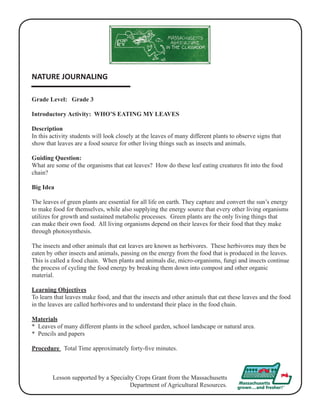The document outlines a nature journaling activity for grade 3 students focusing on the role of leaves in the food chain and the concept of herbivores. It includes objectives, materials needed, procedures for both classroom and outdoor exploration, and guidelines for creating nature journals. The lesson fosters observation and connection with nature, promoting scientific inquiry and reflections on the natural world.






